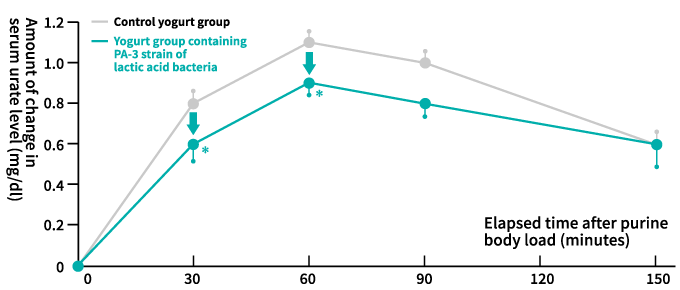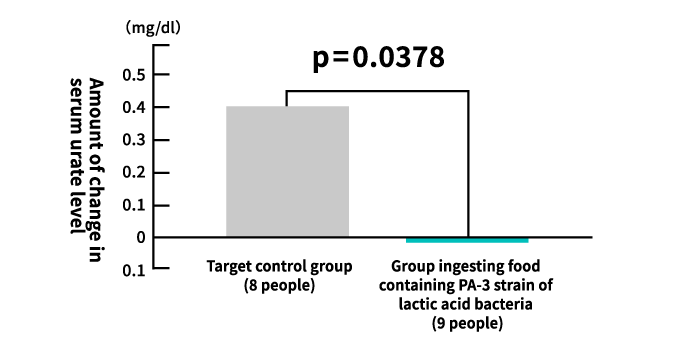|
Top page > Forefront of lactic acid bacteria research > Information on PA-3 lactic acid bacteria > Result of research on PA-3 lactic acid bacteria
Result of research on PA-3 lactic acid bacteriaYogurt containing PA-3 lactic acid bacteria suppresses the rise of serum urate concentration after meals.In this study, a subject pool of 14 healthy males was divided into two groups, and one group was fed yogurt containing PA-3 lactic acid bacteria, while the other group was fed yogurt that did not contain PA-3 lactic acid bacteria. The subjects were given purines simultaneously with their ingestion of yogurt to measure their serum urate concentration at 30, 60, 90, and 150 minutes later. It was observed that in the group that ingested the yogurt containing PA-3 lactic acid bacteria, the increase in serum urate concentration after ingestion was suppressed more than in the other group that did not ingest the bacteria. This proves that PA-3 lactic acid bacteria serve to suppress the rise of serum urate concentration after meals.
Ingestion of yogurt containing PA-3 lactic acid bacteria for eight weeks suppresses the rise of serum urate concentration.This study, led by Professor Yamanaka at Tokyo Women’s Medical University, was conducted on patients with hyperuricemia and gout (undergoing treatment with medications). After temporarily being taken off their medications, a pool of 17 subjects was divided into two groups: one was fed yogurt containing PA-3 lactic acid bacteria, and the other was fed yogurt not containing such bacteria. After eight weeks of yogurt ingestion (two packages per day [100 g/package]), the change in the subjects’ serum urate concentration was compared between the two groups. Comparative observation revealed that the group that was fed the yogurt containing PA-3 lactic acid bacteria had more moderate increases in serum urate concentration compared to the group that was fed the yogurt not containing such bacteria.
|





